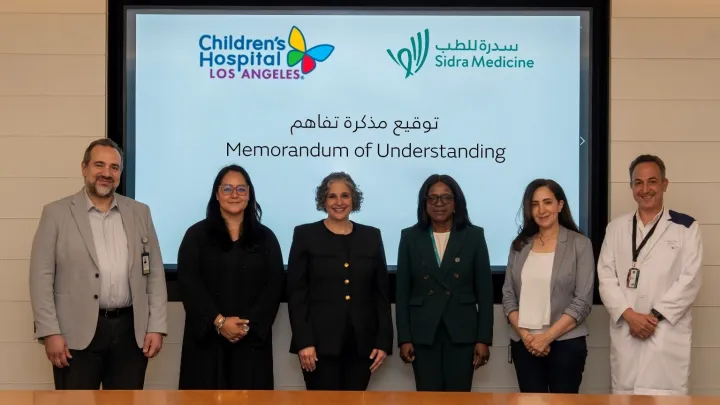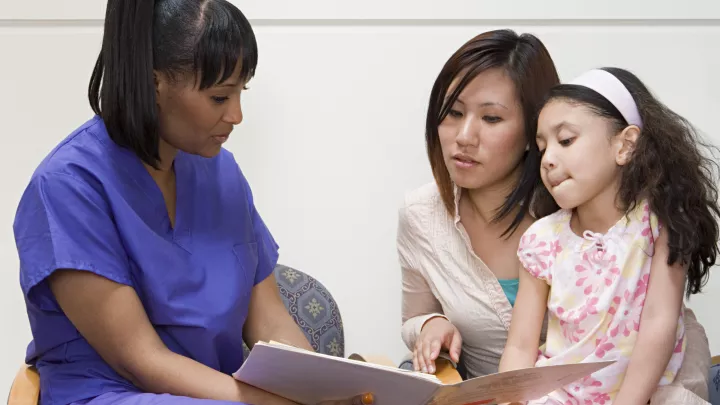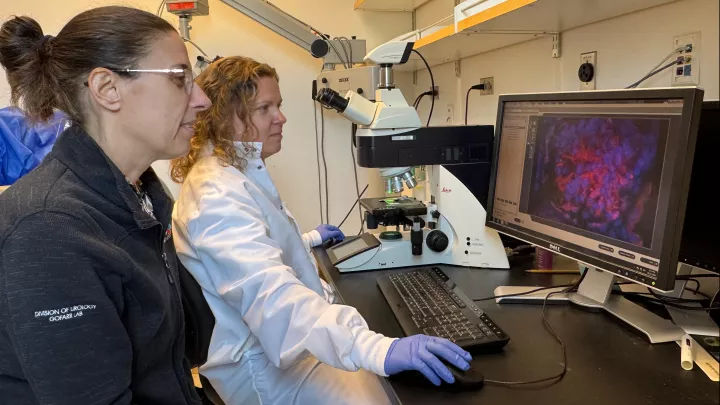The Saban Research Institute - Institutional Information
About CHLA
Established in 1901 and located in the heart of metropolitan Los Angeles, Children’s Hospital Los Angeles is one of the largest and, as ranked by U.S. News and World Report, among the top 10 children's hospitals in the nation. With an established track record of high-quality, patient-centered research, it is currently eighth in funding by the National Institutes of Health among children’s hospitals. CHLA is also one of America’s premier teaching hospitals through its affiliation, since 1932, with Keck School of Medicine of the University of Southern California (USC). It is also an active partner in USC’s Southern California Clinical and Translational Science Institute.
As a private, non-profit hospital, CHLA provides care to a large and highly diverse pediatric population, with more than 17,000 inpatient admissions, over 95,000 Emergency Department visits, and more than 723,800 patient visits every year. Over 15,600 pediatric surgeries are performed annually, including heart and lung transplants, cardiac catheterizations, cancer and neurosurgeries, and orthopedic procedures. The institution is designated as a Level I Pediatric Trauma Center, and has a 386-bed capacity, including 132 pediatric critical-care bed—more than any other hospital in the Western United States.
About Research at CHLA
One of CHLA’s overarching aims is to foster innovative research to improve the health and wellness of children, as well as ensuring the delivery of culturally competent care for diverse pediatric populations. This is achieved through a combination of basic, clinical and translational research studies focused on developing and improving diagnostics and therapeutics—research conducted under the auspices of The Saban Research Institute, one of the largest and most productive pediatric research facilities in the United States.
The Saban Research Institute is one of the few freestanding research centers in the U.S. where scientific inquiry is combined with clinical care and is devoted exclusively to children. Our goal is to improve the health and wellness of children through a combination of basic, clinical and translational studies. Research is performed at the lab bench, in the clinic and in the community. The Saban Research Institute maintains strong scientific and strategic affiliations with the University of Southern California (USC) and, in particular, the Keck School of Medicine of USC. Almost all of the Institute’s principal investigators (clinical investigators, physician-scientists and PhD scientists) are USC faculty, and many have collaborative projects with scientists at the Keck School of Medicine and other departments at USC. The Institute’s researchers also are involved in collaborative projects with academic institutions throughout the U.S. and abroad.
The Saban Research Institute facility occupies a total of 198,000 net sq. ft. of research space on the CHLA campus including the 10-story Smith Research Tower, the 5-story Saban Research Building, an 8,000 sq. ft. Clinical Investigation Center, and a 10,000 sq. ft. Community Health, Outcomes and Intervention Research Unit. Additionally, the Saban Research Institute is responsible for providing administrative support for all research activities at CHLA and is home to a centralized sponsored projects office, which manages proposal and award administration as well as financial management. The Saban Research Institute also supports a series of core facilities fully equipped with state of the art instrumentation to facilitate research at CHLA and USC.
A central initiative of The Saban Research Institute is to understand the childhood and developmental origins of health and disease across the lifespan. The Institute’s interdisciplinary research is organized around four major research themes designed to promote collaboration and innovation in addressing pediatric health challenges:
- Best Starts to Life
- From Discovery to Pediatric Care Innovation
- Pediatric Disease Models and Mechanisms
- Personalized Care and Prevention
Our Research Programs include:
- Community, Health Outcomes and Intervention Research Program
- Developmental Biology and Regenerative Medicine Program
- Developmental Neuroscience and Neurogenetics Program
- Center for Endocrinology, Diabetes and Metabolism
- Best Starts to Life Research Program
In addition, there are 7 Institutes/Centers with a combination of clinical activities and research:
- Cancer and Blood Disease Institute
- Center for Personalized Medicine
- Fetal and Neonatal Institute
- Heart Institute
- Jackie and Gene Autry Orthopedic Center
- Neurological Institute
- Vision Center
As we pursue our goal of becoming a top 5 nationally ranked pediatric academic medical center, The Saban Research Institute is committed to the following strategies:
- Recruiting and retaining a diverse group of outstanding junior and senior faculty.
- Expanding the scientific infrastructure and research facilities to promote synergy and interaction and to enhance translational research.
- Training and mentoring the next generation of pediatric scientists.
- Promoting innovative and interactive research.
To view the latest Facilities & Environment document that contains information on Research Training & Education, Research Core, Facilities & Equipment, Clinical Research Support, CTSI and additional resources here at CHLA, please click here. For key statistics and high-level facts about CHLA as a leading academic medical center, please click here.
Institutional Fast Facts | |
|---|---|
| Institutional Address | 4650 Sunset Boulevard MS #84 Los Angeles, CA 90027‐6062 |
| Phone | 323‐361‐4110 |
| Fax | 323‐361‐8054 |
| Email (Grants) | tsripreaward@chla.usc.edu |
| Email (Contracts & Clinical Research) | chlaclinicalresearch@chla.usc.edu |
| Email (Post-Award) | tsrifinance@chla.usc.edu |
| Institution Type | Nonprofit with 501(c)3 IRS Status (Other than IHE) |
| Institution Identification Type | Hospital |
| Institutional Profile File No. (IPF) | 15200001 |
| DUNS No. | 052277936 |
| SAM UEI No. | DVL1CMRMWRN9 |
| Employer ID No./Tax ID No. (EIN/TIN) | 95‐1690977 |
| Entity Identification No. (EIN) | 1956121916A1 |
| NAICS Code | 622110 |
| Congressional District | CA‐030 |
| Date Of Incorporation | April 1, 1901 |
| Signing Officials | Jodi S. Ogden Karen S. Niemeier Matthew W. McPeck Lilit Amirkhanyan |
Assurance/Compliance Information | |
|---|---|
| SAM/CCR Registration | Valid until 9/11/2025 |
| CAGE Code | 0RMZ8 |
| IRB (Institutional Review Board) Registration | FWA00001914; Valid through 9/6/2028 |
Vertebrate Animals Welfare Assurance | D16-00175 * (formerly A3276-01) : Valid through 10/31/2027 *Effective July 25, 2016, OLAW implemented a new Animal Welfare Assurance database that utilizes a new numbering format (D00-00000). However, the older numbers (A000-01) will be retained for the life of the Assurance. Institutions with an Assurance will receive a new number and may use either the new or old Assurance number in communications with NIH. For convenience, OLAW will reference both new and old Assurance numbers in Assurance-related correspondence. Institutions will be able to view the new Assurance number on the OLAW website list of Assured institutions (Domestic | Foreign) and in any Assurance-related correspondence from OLAW. Institutions seeking a new Animal Welfare Assurance will be provided an Assurance number in the new format only. |
AAALAC (Association for Assessment and Accreditation of Laboratory Animal Care) Accreditation | The program has been AAALAC accredited since November 30, 1992, and was granted full re-accreditation on November 3, 2024, for three years. Re-evaluation in 2027. |
AAHRPP (Association for the Accreditation of Human Research Protection Programs) Accreditation | The program has been AAHRPP accredited since June 8, 2012, and was granted full re-accreditation on September 15, 2020, for five years. Re-evaluation in 2025. |
PHS (Public Health Service) Assurance | D16-00175 |
USDA (US Department of Agriculture) Registration | 93-R-0011 |
| Biomedical Research Support Grant Code | 30 |
Financial Information | |
|---|---|
| Single Audit Compliance Letter | |
| Cognizant Federal Agency | Department of Health and Human Services |
Current NIH Salary Cap | $221,900 (effective January 1, 2024) |
F&A Rate (Federally funded projects) | 68.5% MTDC On-Campus Research (7/1/2017 - 6/30/2018) |
| F&A Rate (Non‐Federally funded projects) | 71.0% TDC Industry Sponsored Basic/Pre‐Clinical 35.0% TDC Other Sponsored Activity, including clinical trials |
| F&A Base | Total Direct Costs (TDC) base includes all of the Direct Costs being charged to the sponsor. Nothing is excluded from the base prior to calculating the Indirect Costs (F&A). This base is typically used when a sponsor declines to pay the organization’s full, federally approved Indirect Cost/F&A rate, but the Sponsor agrees to allow costs which would normally be excluded (Modified) in the Base, to assess Indirects. The Modified Total Direct Cost (MTDC) base is used when an organization’s federally negotiated rate can be applied. It is derived by excluding certain costs from the Direct Cost total. OMB’s Uniform Guidance defines this base for sponsored projects awarded on or after December 26, 2014 as follows: MTDC means all Direct Salaries/Wages, applicable Fringe Benefits, Materials/Supplies, Services, Travel, and up to the first $25,000 of each Subaward. MTDC excludes Equipment, Capital Expenditures, charges for Patient Care, Rental Costs, Tuition Remission, Scholarships and Fellowships, Participant Support Costs and the portion of each subaward in excess of $25,000. Other items may only be excluded when necessary to avoid a serious inequity in the distribution of Indirect Costs, and with the approval of the cognizant agency for Indirect Costs. |
Fringe Benefit Rate | 24.5% CHLA Employee (7/1/2024 – 6/30/2025) |


